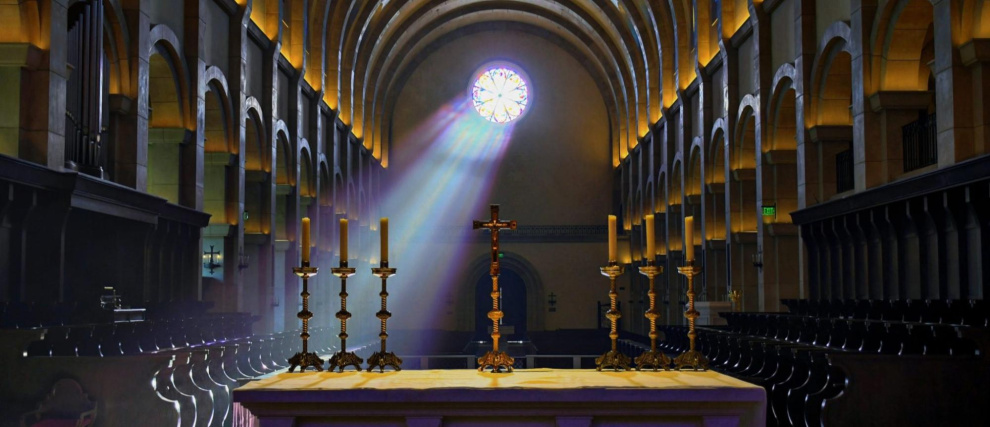Saint Louis
Saint Louis, King of France, marked history with his military, judicial and religious influence. Saint Louis is the source of much progress in the Kingdom of France. Although he had become king at a very young age, he proved himself militarily and crushed the revolts of his dissidents, but throughout his reign in France he maintained a deep sense of justice, wisdom and the Christian faith. King and saint, Louis IX left behind a brilliant heritage.
The life of Saint Louis
Early reign and conflict
Born in 1214, Louis IX is the grandson of King Philip Augustus, and after the early death of his brother Philip, he became the eldest son of the five children of Princess Blanche de Castille and King Louis VIII. The latter, called "the Lion", died in 1226, only four years after the beginning of his reign, giving immediate succession to his son, then barely 12 years old. Because of the young age of King Louis, his mother took over the regency until he came of age.
Blanche de Castille soon had her soon baptized in order to avoid the uncertainties in the kingdom. Nevertheless, she had to face conflicts and revolts on the part of barons and counts. She demonstrated diplomacy to bring peace to the kingdom through strategic marriages, negotiations, surrender of territories, and even by signing a truce with King Henry III of England in 1227.
King Louis IX still had to prove himself militarily to silence conflicts: in 1230, he entered the campaign against Pierre Mauclerc, Duke of Brittany, who had pledged allegiance to England. By his victory, he imposed his authority on the other contentious lords. In 1234, Louis married Marguerite de Provence, with whom he had eleven children.
However, conflicts resumed in 1242, with the war of Saintonge, opposing King Louis and a coalition of counts and great lords, including Henry III, who was eager to regain possession of the territories that were occupied by his predecessors. The war ended in favor of Louis IX, who signed a truce with Henry III, then a peace treaty, known as the “Treaty of Paris” in 1258. Not resentful, Louis allowed Henry to visit the necropolis of his ancestors in France, and to celebrate Christmas with him: the two kings developed a sincere friendship afterwards.
The judicial reforms of Saint Louis
King Saint Louis is known for having reformed the judicial system of his kingdom according to his deep religious convictions, instilled by his very pious mother, Princess Blanche de Castille. Saint Louis, called the Prudhomme, or wise man, held a deep sense of justice and arbitration, which in part enabled him to resolve the long conflict between Capetians and Plantagenets during his reign. In addition, he put an end to tournaments and duels to limit personal revenge, and in 1245, he renewed the quarantaine-le-roi (the king’s forty days), a mandatory forty-day period of reflection instituted by his grandfather Philippe Auguste, aimed at easing tensions between two clans in conflict. The notion of royal justice is perhaps best illustrated by the image of “Saint Louis dispensing justice under the oak”, born of the establishment of a system through which the king's subjects could address their grievances directly to their sovereign, and their grievances would then be resolved by the king's justice officials. Saint Louis also instituted the “grand ordinance”, advancing the notion of presumption of innocence, assuring everyone the right to a good trial. Officials were appointed to ensure justice in the various cities of the kingdom.
The Crusades
As a very pious king, Saint Louis undertook the seventh crusade, in order to allow pilgrimage to the Holy Land. Following a convalescence due to the battles of the war of Saintonge, and long tactical and spiritual preparations, he left France in 1248 to arrive in Egypt in 1249 after a stopover in Cyprus. Despite promising beginnings, including the occupation of Damietta by the army of King Louis, the conflicts continued against the Templars, and Louis and his soldiers were taken prisoner. He was released and left for Saint Jean D’Acre (now located in Israel) in 1250, for a large ransom of money and the transfer of Damietta. He remained in the Holy Land for a few years, winning the favor of the eastern Christians and striving to reorganize the defenses of the French principalities. In 1252, Blanche de Castille died, and Louis returned to France two years later.
Eighteen years later, Louis IX embarked on the Eighth Crusade. He embarked for Tunis in 1270, but heat and sickness overcame the weakened health of the holy king, who died the same year, at the age of 56.
Louis IX was canonized on August 11, 1297 by Pope Boniface VIII.
The legacy of King Louis
The relics and the Sainte-Chapelle
King Louis is known for his deep sense of justice, and above all, for his fervent faith. He is also a builder king: to him are attributed the construction of the ramparts of Aigues-Morte, the castle of Tour, and above all, he is responsible for major religious projects, mainly that of the construction of the Sainte-Chapelle.
In 1239, Saint Louis acquired the Holy Crown, a symbolic relic of the Passion of Christ, from Baudoin VI, King of Constantinople. To do so, he invested an impressive amount of money. In the years that followed, he continued his enterprise, and brought to France a piece of the Holy Cross, the Holy Blood, and the stone of the Holy Sepulchre, then a piece of the Holy Spear and the Holy Sponge. These relics were sheltered for a time in the palatine chapel of Saint Nicolas. But King Louis had the ambition to build a shrine worthy of the name to preserve and venerate this collection of holy relics. Thus, to replace the Saint Nicolas chapel which he had destroyed, he had the Sainte-Chapelle built in the Palais de la cité. Construction began between 1241 and 1244, and was completed in record time of seven years. It stands out for its magnificent stained glass window, an impressive architectural sophistication for its time.
The Chapel is not a place of pilgrimage: its access was restricted to the college of chaplains founded by the king to watch over the relics, and maintain the interior of the Chapel, as well as to the clergy, the royal family and its guests. In 1248, a representative dedicated the upper part of the chapel to the Holy Cross, and the lower part to the Virgin Mary.
The Saint Louis Foundation
At the dawn of the French Revolution, and well afterwards, the holy relics were lost, or destroyed because of the iconoclasm that took place at the time. The Holy Chapel was no longer a place of worship, it was converted into an archive of the Palace of Justice. It was in terrible shape. During the 19th century, an awareness campaign led by the great contemporary writers made it possible to set up the restoration of the Sainte-Chapelle (this restoration is due in part to the book The Hunchback of Notre Dame by Victor Hugo, which was also at the origin of the rescue of the Notre Dame Cathedral in Paris).
The Saint Louis Foundation, established in 1972, has undoubtedly inherited the vocations of conservation and preservation of its eponym: it is an institution aimed at ensuring the conservation of the heritage sites of the Maison d'Orléans, including the royal chapel Saint-Louis (or royal chapel of Dreux).
The Count of Paris, Henri d 'Orléans, dedicated this foundation, recognized in 1972 as an institution of public utility, to the great monarch and ancestor of the kings of France.

